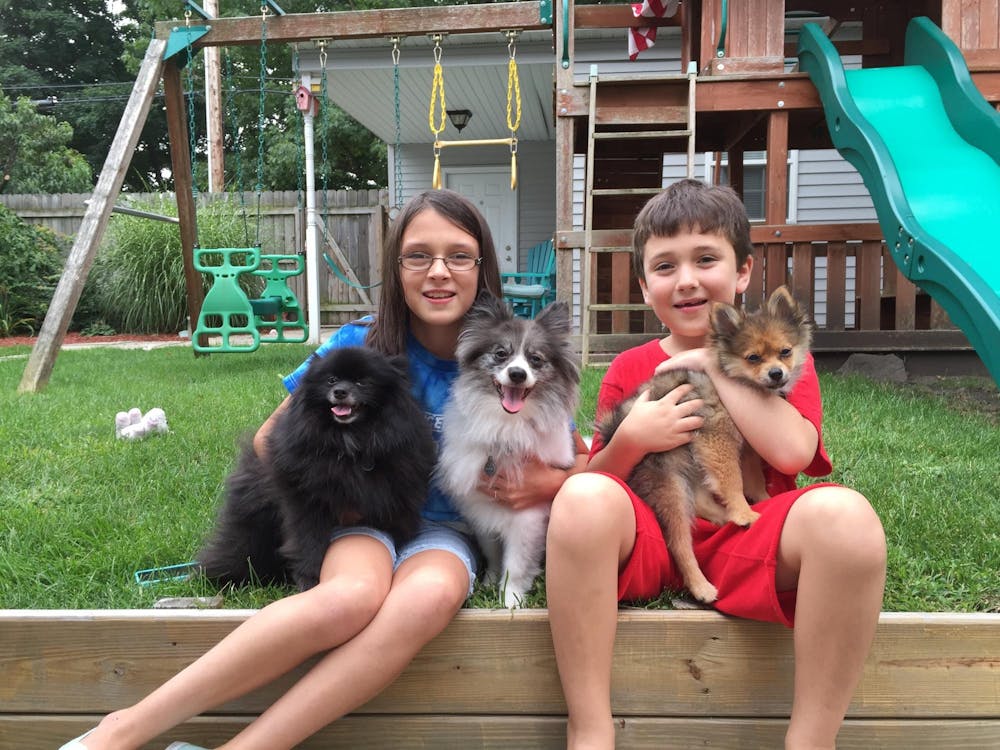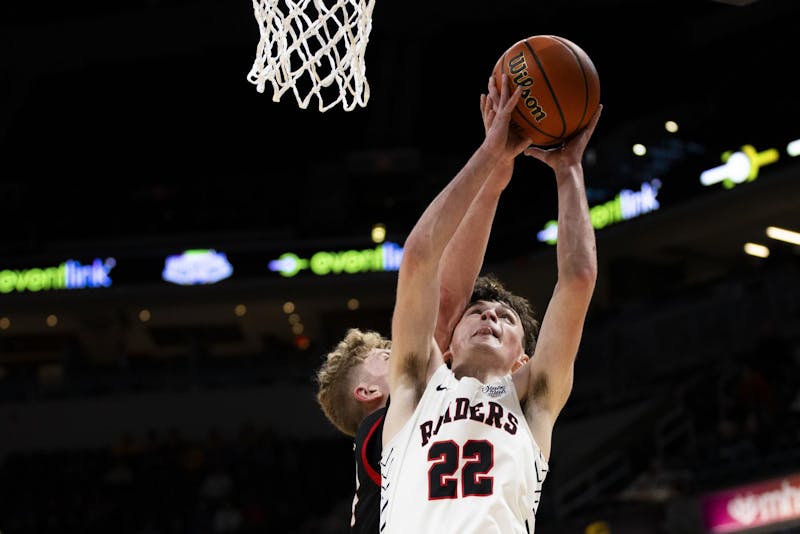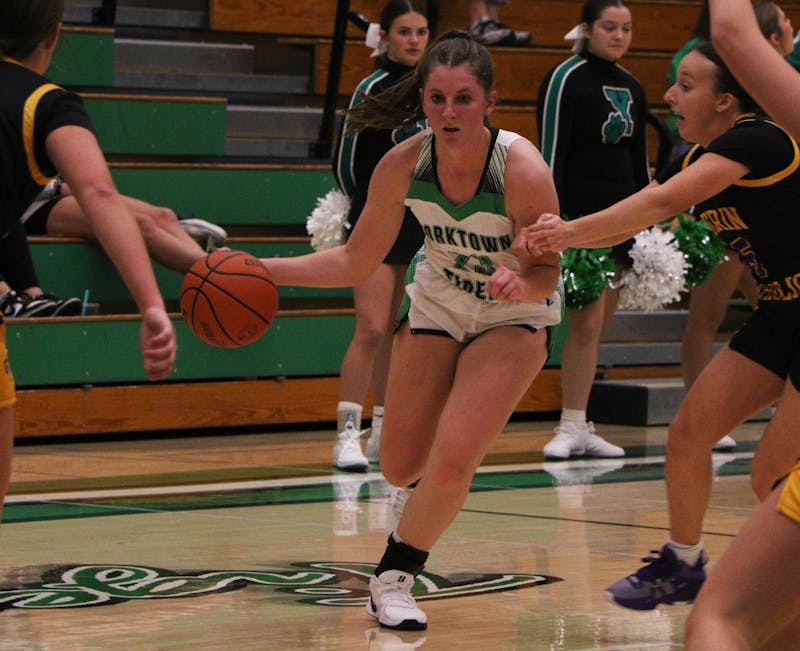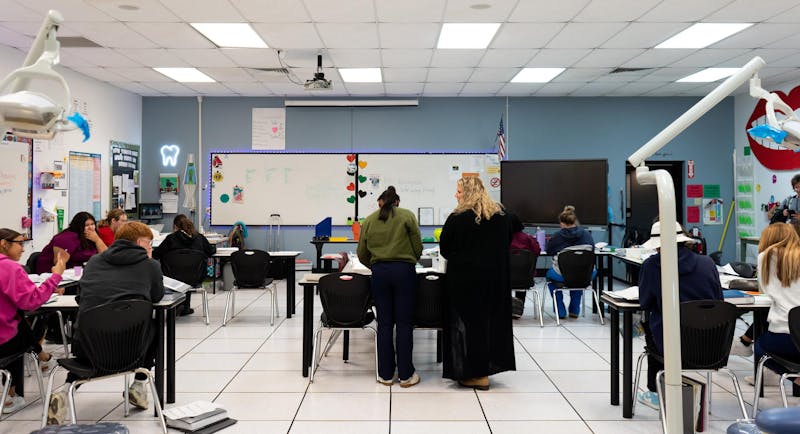Katherine Hill is a first-year journalism major and writes “Cerebral Thinking” for the Daily News. Her views do not necessarily reflect those of the newspaper.
Pets have a lasting impact on our lives.
The ones that come into our lives during adolescence serve an extra special purpose as they shape the person we become. Childhood pets have just as much, if not more, of an influence on our life and upbringing than a parent or any friend.
Pets imprint the clay of childhood with memories of running around the front yard, chewing up a beloved tennis shoe or slobbering all over the blanket they’d lay on after jumping up onto your bed.
My parents are both animal lovers. My dad, in particular, has a long history of taking in animals who find themselves in his alleyway or backyard. Throughout my toddlerhood, our house was full of creatures and critters.
My mom’s Yorkshire Terrier, Maggie, hung around the longest out of the five animals that lived in our home at one point. The rest I vaguely remember but fully love from pictures and shared memories.
There was always an animal in the house. There was always the four-legged clicking of Maggie making her way over the tiled floor of the kitchen. There was always howling at the window as the mail person approached the house with a package or as cars drove by.
I feel as if the coexistence I’ve always had with animals made me the person I am today.
A study published in March 2019 for the National Library of Medicine analyzed pet ownership and children’s emotions with their pets.
The data indicated that children who own pets during toddler years had “better emotional expression” and development in later childhood. The integration of animals and pets in the early years of life pointed to strengthening social skills, as well as a greater ability to develop patience and emotional control.
According to the American Academy of Child and Adolescent Psychiatry, the advantages of pet ownership lead to healthier interpersonal relationships and human interaction. Children raised in pet households are more likely to learn how to properly care for and treat living beings beyond the animals they take part in raising.
Even though it’s proven to be hard at times, I don’t think I’d have the same patience and compassion I do today without those formative experiences of caring for my beloved pets.
The first pet to grow up alongside me came into my life while I was in first grade. A black Pomeranian named Bootsie — whose full name was Bootsie Collins Vandalay Blackbear Hill — was the bundle of black fluff who taught my younger brother and me how to love someone wholeheartedly.
Bootsie and Maggie only had a brief overlap in time. Maggie was the last surviving of the five critters from my toddlerhood — the pets my parents each had before getting married.
When she died, a whole generation of animals had passed.
After the loss of Maggie, Teddy Pendergrass came along — a merle gray and white Pomeranian with loyalty written into his two-tone fur. He came into our family in November of my second grade year.
The night before I started fifth grade, my family went shoe shopping. But instead of just shoes, we came home with our third Pomeranian, Gracy. For my family, the addition of Teddy and Gracy filled the hole Maggie left behind in our lives.
For eight years, our three Pomeranians were an inseparable trio. Bootsie — the unofficial matriarch of the group — led the other two.
The three of them ruled my house. They welcomed me home from school every day, were always in competition with one another for my attention and insistently begged for treats every chance they got.
Coming home for Thanksgiving this past year, my dad — true to his character — had taken in a stray kitten who was born in our backyard about a month earlier. I had never been a cat person. With three Pomeranians who were my whole world, how could I be?
But Kitty was different. I never thought a cat could capture my heart the way my dogs had, but I was proven wrong. Kitty became another lesson to me: the animals who somehow found their way into my life were irreplaceable and would irrevocably change my life.
But there was a harder reality I knew I’d have the face. It just came sooner than expected.
As Bootsie got older, she developed breathing problems and had frequent seizures. She’d bounce back after the episodes, but I was terrified whenever I saw her struggling like this. I knew it wasn’t normal, and I felt reality weigh heavy on me — she wasn’t going to be able to live like this much longer.
During the end of winter break in early January of this year, I had to say goodbye to Bootsie. I was home with my family and could be with them in her final days. She passed away peacefully in her sleep. And in the month after, that has given me some solace.
Our pets find their way into the fabric of our lives — just like humans — and the loss of them bears a heavy load that reminds us of the brevity in our lives.
I’m waiting for the loss of Bootsie to get easier. I’m waiting for my resilience to keep building.
That’s the price of love. Bootsie and my countless pets — in the past, present and future — transformed me. The many lessons she taught me made me a kinder, gentler person.
Certain things have happened in my life give me no other choice but to believe everything happens for a reason. Bootsie’s death and the coinciding time of Kitty’s arrival in my family are two of those things.
Animals find us; we don’t find them. When they do find us, they show us how much we need them.
I know from grief, there will be growth and new joy. I’m just waiting to take that next step.
Contact Katherine Hill with comments at katherine.hill@bsu.edu .





The Daily News welcomes thoughtful discussion on all of our stories, but please keep comments civil and on-topic. Read our full guidelines here.